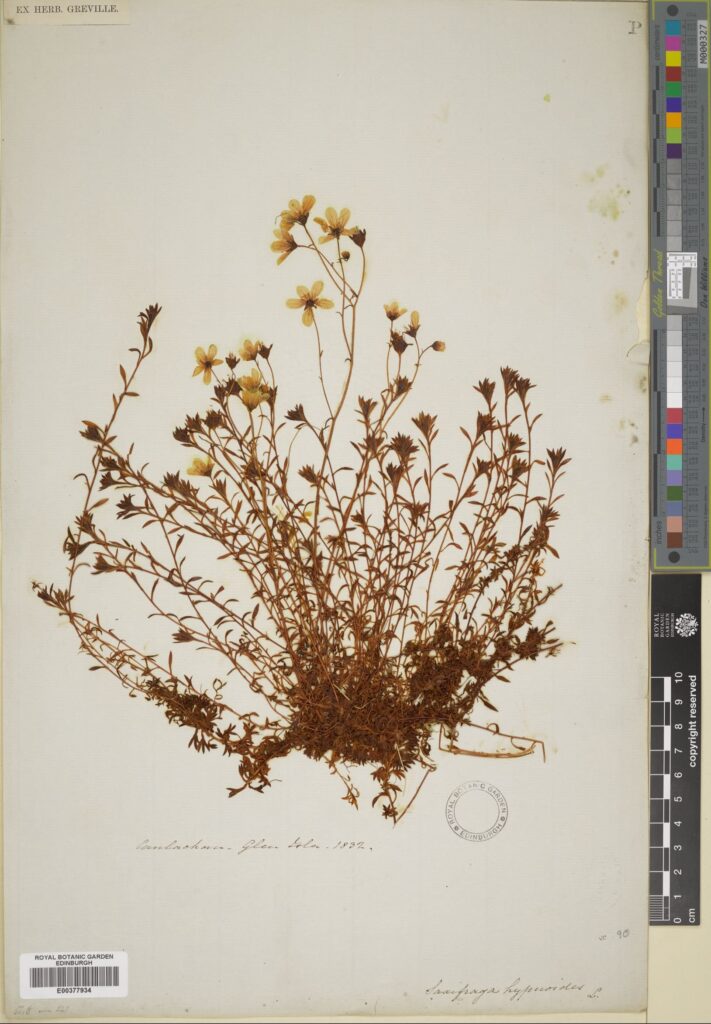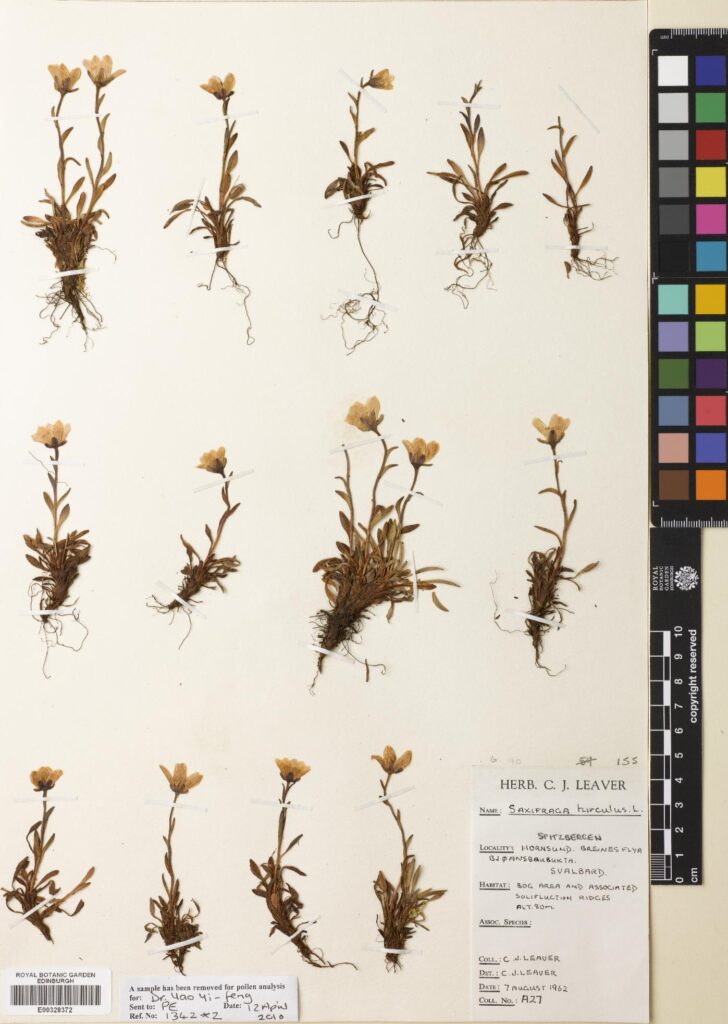The following blog was written by Rose Kent a digitiser in the Herbarium.
Since 2021 we have increased our digitisation capacity reaching 1 million specimens imaged in August 2024. Each digitiser is assigned a family of plants to work through. This series of blogs will spotlight the families that have been completed by a member of the team.
The Saxifragaceae is a family of herbaceous plants that are found in the northern temperate, arctic, and alpine regions of the world. Plants in this family grow in a diverse range of habitats including deserts, mountainous areas, woodlands, and wetlands.
There are currently around 40 accepted genera and over 900 species in the Saxifragaceae. Plants in this family characteristically have leaves that alternate along the stem, sometimes forming basal rosettes, and flowers with 4 or 5 distinct petals and sepals, and ovaries that are fused at the base with diverging styles at the top.
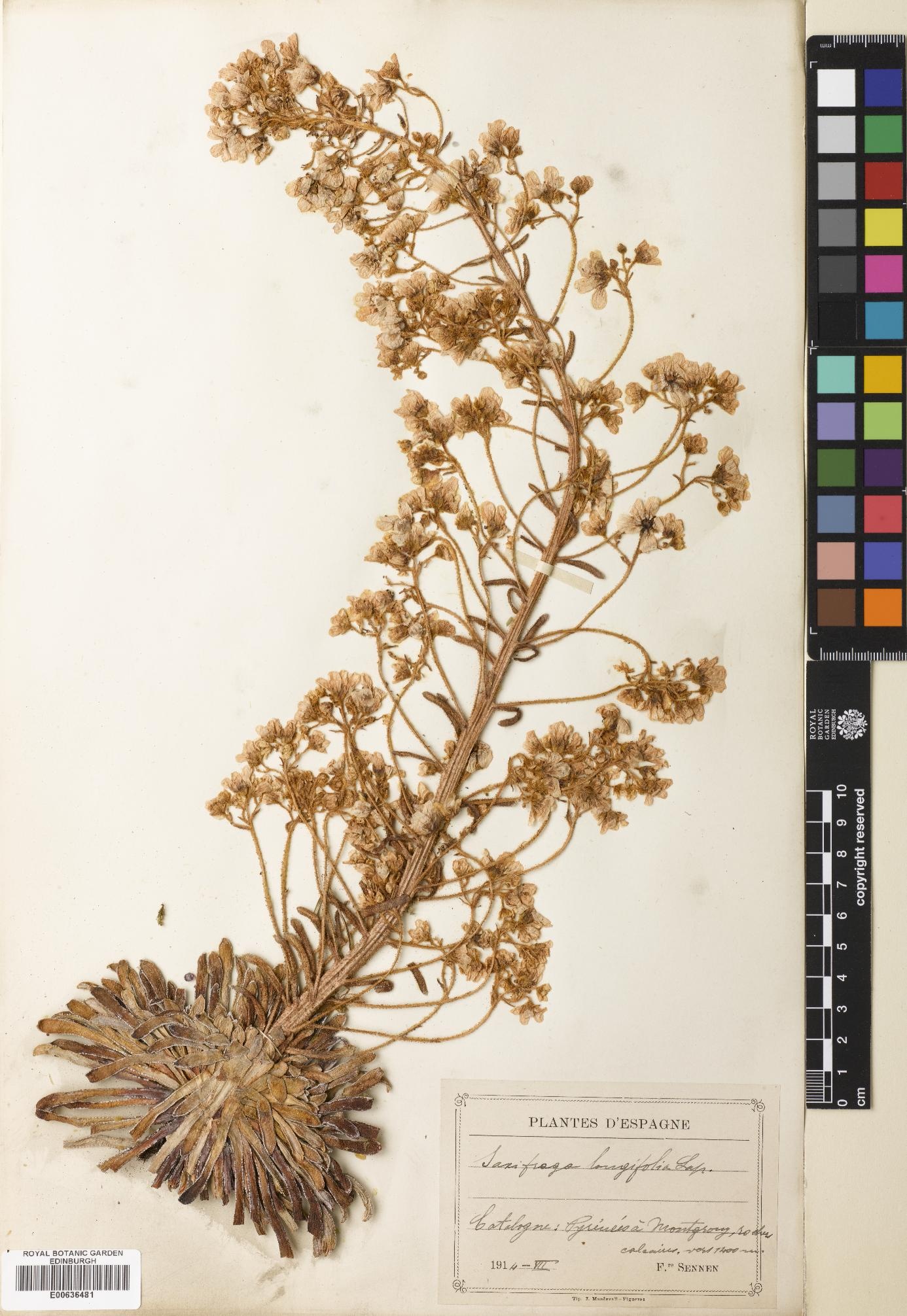
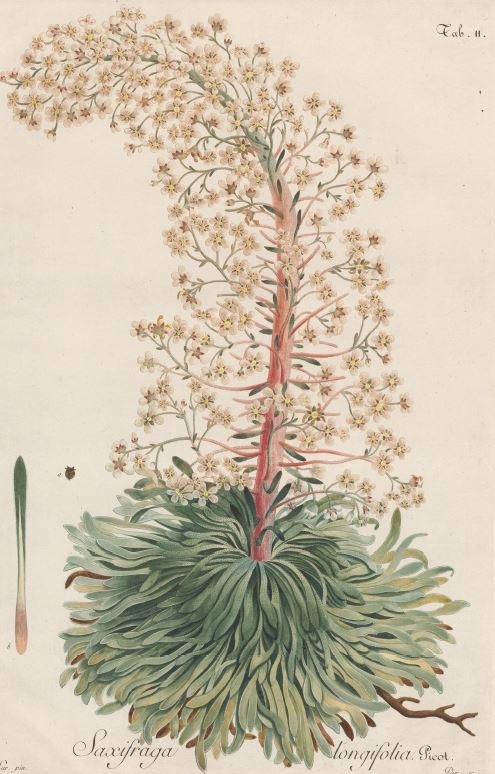
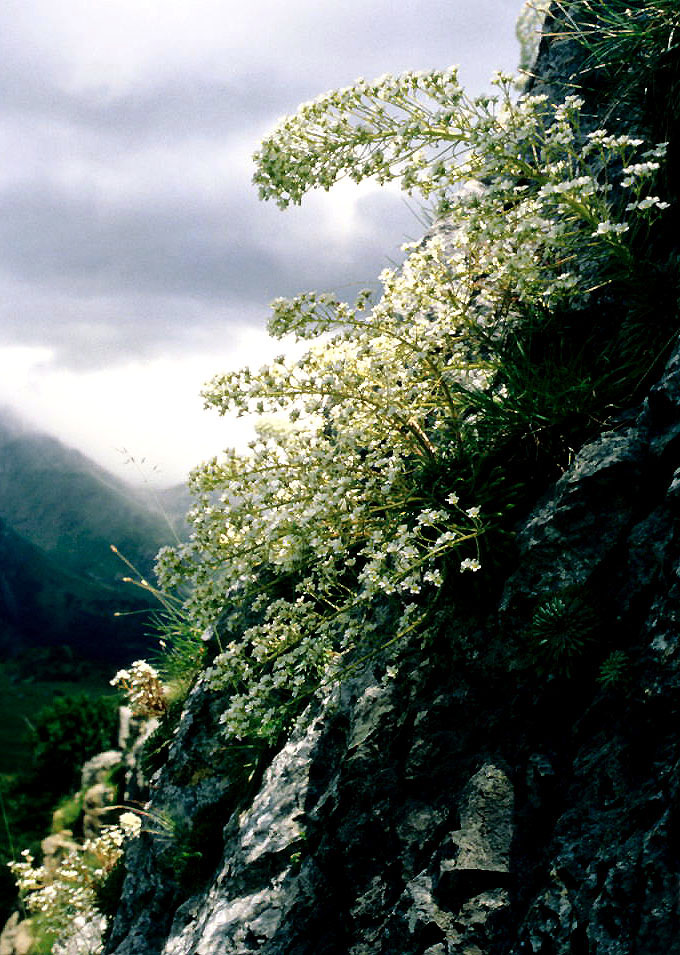
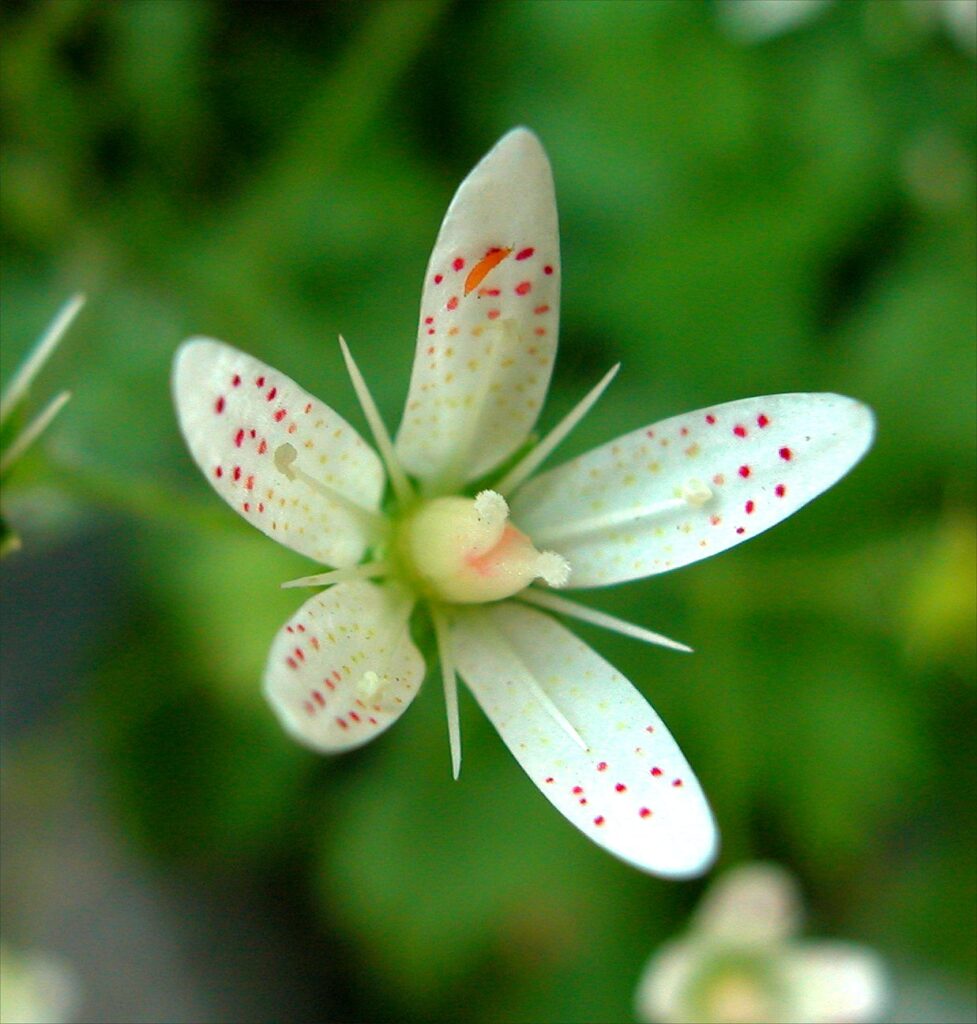
The flower that breaks rock
The largest genus in the family is the one that gives it its name: Saxifraga. Plants in the genus Saxifraga are particularly well-known for their ability to grow in the crevices and fissures of rocky crags and exposed scree slopes, like those found in the high alpine regions of Europe or South America.
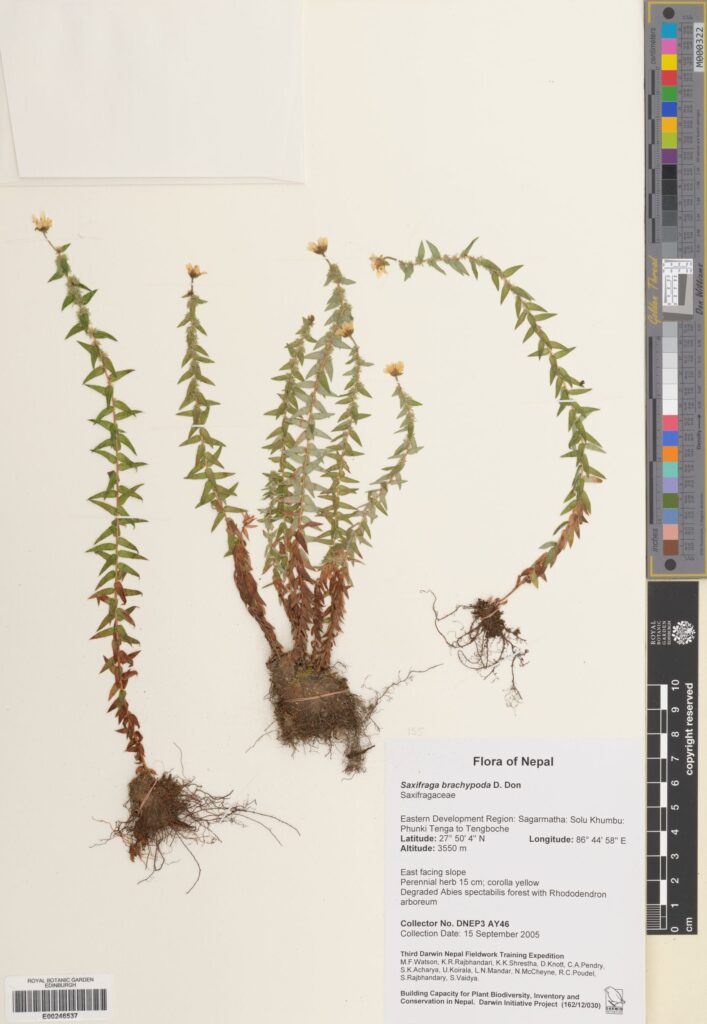
The purple saxifrage (Saxifraga oppositifolia),for instance, is an arctic-alpine plant that grows in dense, cushion-like mats at elevations as high as 4000m. It is one of the highest dwelling plants in Europe, and one of the most northerly in the world. The species epithet “oppositifolia” refers to the opposite arrangement of its leaves along the stem which is unusual in this family. These plants have tough, penetrating roots that cling to the rocks it grows on.
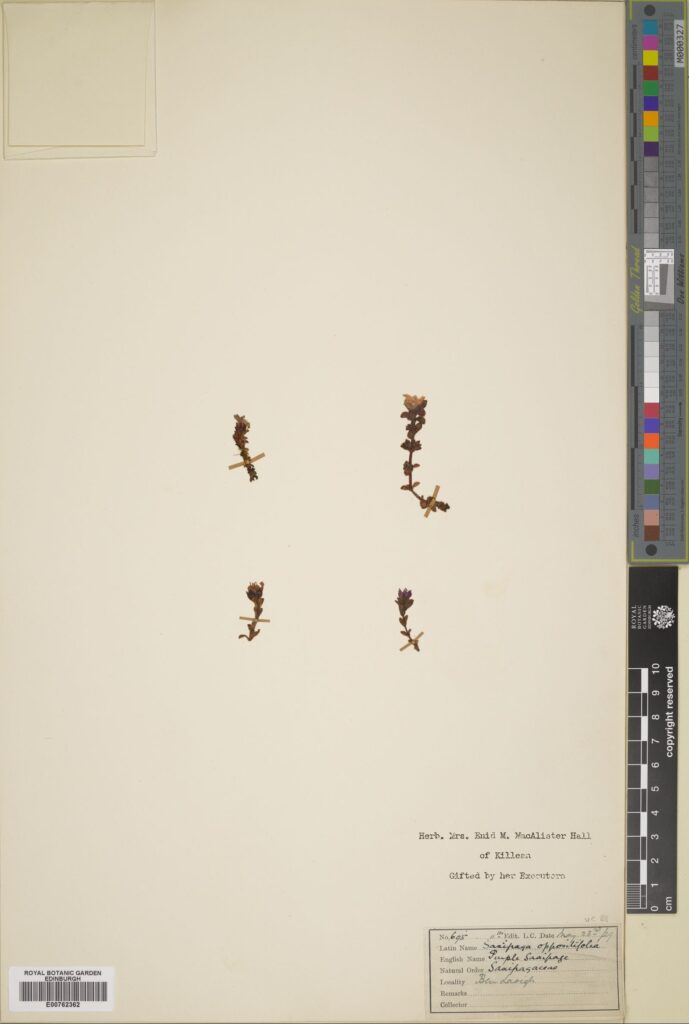
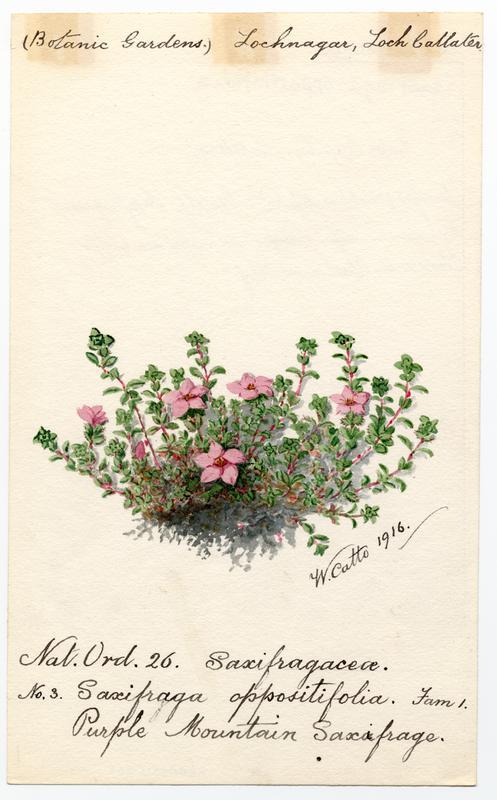
The name Saxifraga translates directly to “rock-breaker” from the Latin words saxum (“rock” or “stone”) and frangere (“to break”). Growing in rocky crevices, with roots penetrating and pushing through cracks in stone, these plants quite literally break rock as they grow.
Historically, a plant’s habitat (where a plant grows) was thought to bear an indication as to its healing qualities. For example, in her A Curious Herbal (1737-39), the Scottish botanical illustrator Elizabeth Blackwell writes that the white saxifrage (Saxifraga alba) “takes its Name from its supposed Virtues being diuretic, and lithontriptic [of or relating to destroying bladder or kidney stones], good for the Stone and Gravel…” In other words, the saxifrage not only grows on and breaks rocks, but it can also be used medicinally to break up other kinds of stones – those in the bladder or the kidneys.

Our Collections
We have 13,066 specimens of Saxifragaceae in our collection, of these 337 are type specimens. Our collections can be viewed here.
Top 5 regions
| No. of Specimens | Herbarium Filing Region |
| 3,797 | Europe (excluding Britain and Ireland) |
| 1,912 | Britain and Ireland |
| 1,584 | Inner China, Korea & Taiwan |
| 1,230 | North America |
| 891 | Cultivated |
Top 5 Genera
| No. of Specimens | Genus |
| 10,485 | Saxifraga |
| 786 | Chrysosplenium |
| 325 | Astilbe |
| 305 | Heuchera |
| 227 | Bergenia |
